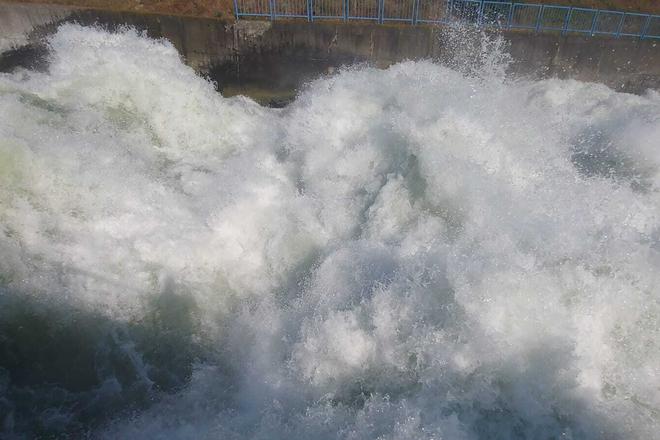The river’s waters gush down the vast canal just outside the village of Dobrohošť near Bratislava, roaring, swirling and foaming as they cascade down the concrete channel built to bring them to what is left of the inland delta of the Danube.
The flow rate is an extraordinary 120 cubic metres per second - four times the usual rate during summer.
But this is no natural disaster, the Danube has not burst its banks, threatening swathes of surrounding land.
Instead, it is a controlled experiment at the water intake facility in the village as part of the latest regular artificially-induced flood designed to help the ecosystem of nearby wetlands.
After the Gabčíkovo hydroelectric power station was built in the 1990s, the local wetlands and river side arms saw their natural water supplies cut off.
Their only source was the facility in Dobrohošť which brings water into the area from an artificial supply channel through which the Danube flows towards Gabčíkovo’s turbines.
Until now, however, involved stakeholders have been unable to find common ground on water flow rates. Nature conservationists have demanded significantly higher rates but Vodohospodárska Výstavba (VV), the state-owned company that builds water structures and manages hydro-power plants including the Gabčíkovo hydroelectric power plant, has objected.
It was only this summer that an agreement was reached between state conservationists, water managers and environmental activists and the water flow rate reached a historic 120 cubic metres per second.
It had gradually decreased to 30 cubic metres per second when the floods ended on August 1.
“I believe these floods will continue to be held in the future, because the wetlands need them,” Dušan Karaska, director general of the State Nature Conservancy (ŠOP), told a press conference during the floods.


 Danube water gushing into the wetlands and river side arm system near Bratislava. (source: Andrej Somora)
Danube water gushing into the wetlands and river side arm system near Bratislava. (source: Andrej Somora)